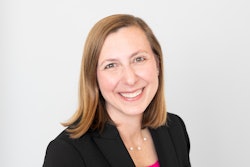Over the last few weeks, I have had the pleasure of visiting several historically Black colleges and universities (HBCUs). I conducted research for a book on the Black Campus Movement, the late 1960s/early 1970s Black student struggle to diversify and make higher education relevant.
I gathered a wealth of materials for my study and relished my first visit to these historic Black colleges. Even though I only spent a few hours at many of these campuses, I wanted to share some of the highlights of my experiences.
I first visited Winston Salem State University in North Carolina and was struck by the beauty of its red brick buildings and the centralized sculpture with its moving quotes. I went over to North Carolina A&T State University in Greensboro and had the pleasure of walking into its impressive library. Its archive room was fascinating, donned with pictures and paraphernalia from its presidents and the four freshmen who launched the sit-in movement in February 1960. It appears the strip of cities in central North Carolina between Winston-Salem and Raleigh may have been the foremost site of Black power campus activism in the South, with Howard Fuller, a local Black Power organizer and founder of Malcolm X Liberation University, as one of the students’ chief ideological icons.
Next, I traveled to Paine College in Augusta, Ga. I spoke at length to the college’s historian, Dr. Mallory K. Millender, who shared with me the relatively unknown history of this small HBCU. Apparently, the Methodist institution had an interracial charter, one of the few (and possibly only) in the South. For decades while Jim Crow flapped its wings separating the races in higher education, it had some non-Black students.
Eventually, I headed west to Alabama A&M University where the archivist is the hospitable Ms. Carla Clift. Unfortunately, I did not get to meet her, but she placed my research in the hands of her assistant, a master’s student in psychology. I traveled to Montgomery and visited Alabama State University with its on-campus dome for a sports complex and its slew of construction projects underway. There was so much construction going on it seemed like they were building a new campus. I was impressed. Go ahead, Alabama State.
The following day, I headed over to Tuskegee University. As soon as I saw the campus, I felt I was moving on hallowed educational grounds. The brick buildings, many of which I knew were built by the students themselves with Booker T. Washington overlooking, were a sight to see. Washington’s house and his centralized statue were remarkable as well, as was Tuskegee’s professional staff of archivists, who have a rich history to preserve.
The next stop was Itta Bena, Miss., just outside of Greenwood, Miss., where historians report that Stokely Carmichael mainstreamed the term “Black Power” on the Meredith March Against Fear in June 1966. In Itta Bena, I located Mississippi Valley State University where I received more information on the 900 boycotting students who were arrested in the spring of 1970 — supposedly the largest mass student arrest in American history.
Then, I headed through the buckle of the Black belt in Mississippi — Sunflower County with its ocean of cotton where Fannie Lou Hamer once led the Black rebellion — and over to Alcorn State University. Its library was immaculate and its special collections area was dotted with posters and sayings from great Black figures. Of course, there were pictures of the late NFL quarterback Steve McNair, an Alcorn State alum.
I finished up my stint in Mississippi and my research tour of HBCUs in Jackson. I wanted to go over to Jackson State University to learn more about the two protesting students who were killed in 1970. But I was unable to, so I pleasantly had the entire day to conduct research at one of the cradles of the civil rights movement — Tougaloo College. It appears that Tougaloo students were just as active in the Black Power movement. A late 1960s statement I found in the archives from a White professor at this Christian school is still with me. He told a reporter, “Malcolm X is more popular than Jesus Christ here. The students actually worship him.” I would be remised if I did not mention that Tougaloo’s library a rich and elegant assortment of African artifacts, sculptures and portraits. Lining almost every section of the two-story library, the collection was striking.
As a FAMU Rattler, I believe my alma mater has the most impressive library. But there are several HBCU libraries I saw on this trip — namely North Carolina A&T, Alcorn State and Alabama A&M — that could give Rattlers a healthy competition.
We have discussed at length those HBCUs that have closed or are struggling to stay afloat. I am sure these HBCUs I visited have their problems too, as all American colleges and universities do in the midst of the Great Recession. Still, HBCU folks seem to have a love/hate relationship with their schools. On my trip, I saw the pockets of love, filled with pencils of HBCU spirit and pride. The people, the landscape, the aura of these HBCUs rewrote in my mind — if it was ever blurred or erased — that there are several HBCUs that are alive and well.
Dr. Ibram H. Rogers is an assistant professor of African-American history at SUNY College at Oneonta. Visit his personal blog “The Progressive Corner” at progressivecorner.wordpress.com.


















